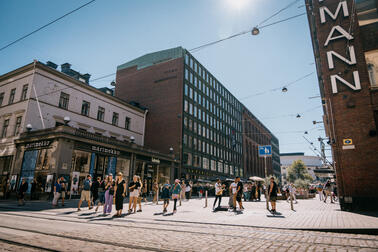
At the end of 2023, Helsinki had 674,500 residents. According to the forecast, the boundary of 700,000 people will be broken in 2027, there will be 797,000 people in 2040, and at the end of the forecast period in 2060, there will be more than 900,000 residents.
The annual population growth for 2024–2026 is projected to be 8,200 residents, and from 2027 onwards it will be just under 7,500 residents per year, slightly above the average for the 2010s.
“Based on preliminary data, it seems that the population growth in Helsinki in 2024 will exceed the boundary of 9,000 people, but will be lower than in 2023. At the end of August 2024, the population in Helsinki was 681,800,” says Harri Sinkko, Special Researcher of the City of Helsinki.
In the 14 municipalities of the Helsinki region, the population will increase from the current 1.58 million to 1.88 million in 2040. Nearly 2.13 million people are projected to live in the region at the end of the forecast period in 2060.
Growth from foreign migration
Helsinki's population growth is mainly based on migration gain , most of which comes from abroad. Helsinki also receives a migration gain from Finland, from outside the Helsinki region. The number of deaths will increase in the coming years more than the number of births due to the ageing of the population, so natural population growth (the difference between the number of births and the number of deaths) will decrease towards the end of the forecast period. However, the number of births will remain higher than the number of deaths throughout the forecast period.
Strong growth in the oldest age groups
The most significant increase in the forecast period occurs in the oldest age groups. According to the forecast, the number of people aged 75 and over is expected to increase by nearly 15,000 people by the end of 2030. In 2040, the age group will already have almost 28,000 more people than at the beginning of the forecast period.
The number of children under school age is projected to increase by about 2,200 by the end of 2030, and by 2040 there will be 5,000 more children than today. By the end of 2030, the number of comprehensive school-age children, that is, 7–15-year-olds, will decrease by 1,000 children, but will grow later so that in 2040, the age group will include 1,600 more children than today. The decline in the number of comprehensive school-age children in the early part of the forecast period is the result of the small number of births in recent years.
Highest growth for housing production project areas: for example, Kalasatama, Jätkäsaari and Kruunuvuorenranta are growing
According to Helsinki's regional population forecast (2024–2038), the population will grow most at the major district level in the Central major district. Of the subregions, the population will increase most in areas where a lot of new housing is being built. Examples of such areas are the Kalasatama project area which includes the Hanasaari and Hermanninranta neighbourhoods, Central and Northern Pasila, Jätkäsaari, Kruunuvuorenranta and Yliskylä, Vuosaari and the area of the Malmi Airport.
In some of the housing project areas, constructions and the following population growth will start to increase in the 2020s, but in some of the neighbourhoods, the most significant population growth will be seen nearer to the end of the projection period, in the 2030s. It should be noted that according to the projection, the population of some of the areas in Helsinki will decrease.
Swedish-speaking population is growing, but their relative share is decreasing
The Swedish-speaking population in Helsinki will increase by about 7,700 people by 2060 during the forecast period, but the group's share of the total population will decrease from 5.5% to less than 5.0%. The Swedish-speaking population is growing most in the same areas as the total population.
The forecast data can be found in the new publication of the Helsinki City Executive Office, the Helsinki and Helsinki Region population forecast 2023–2060, and the Helsinki regional population forecast for 2038.


